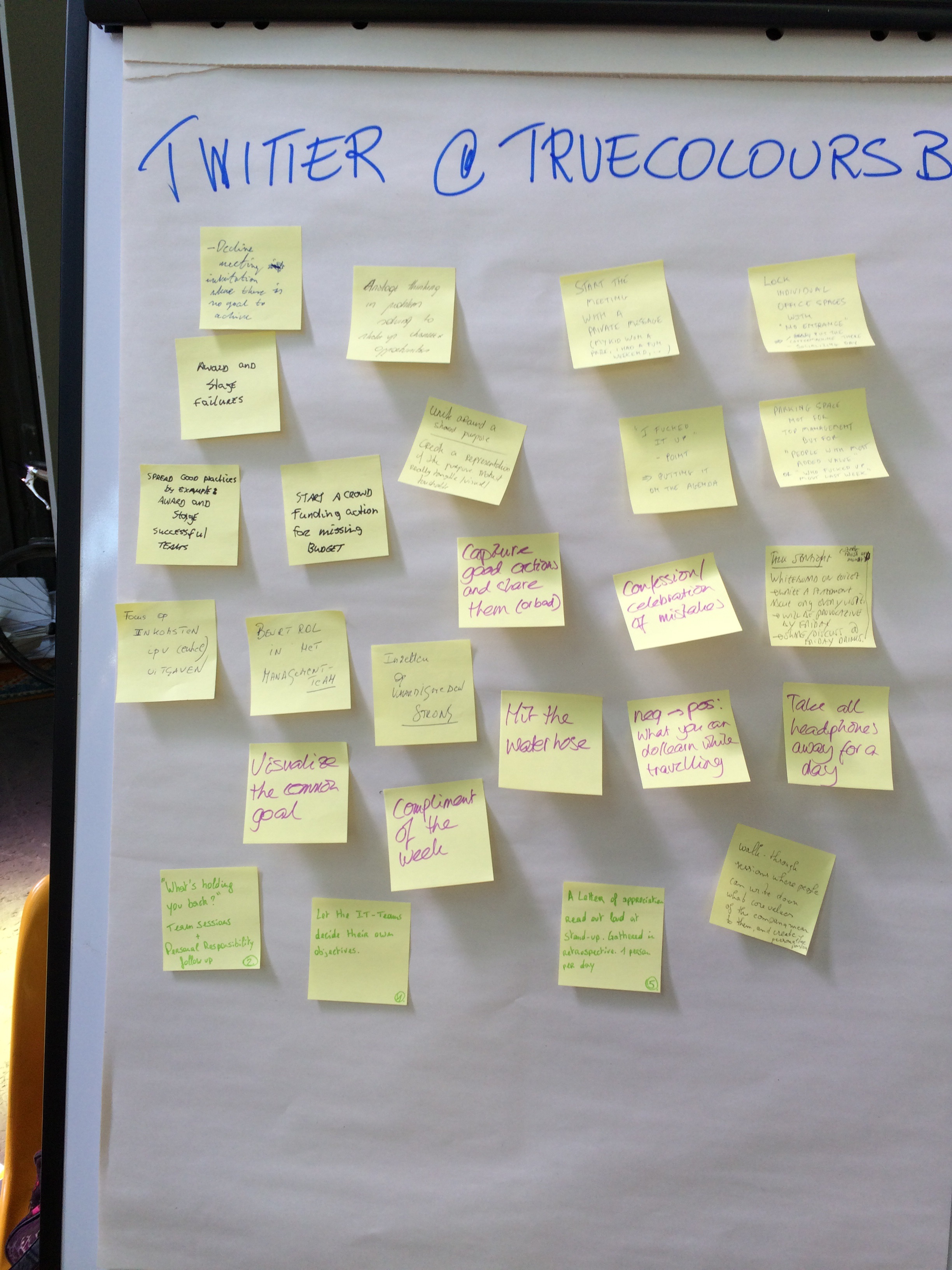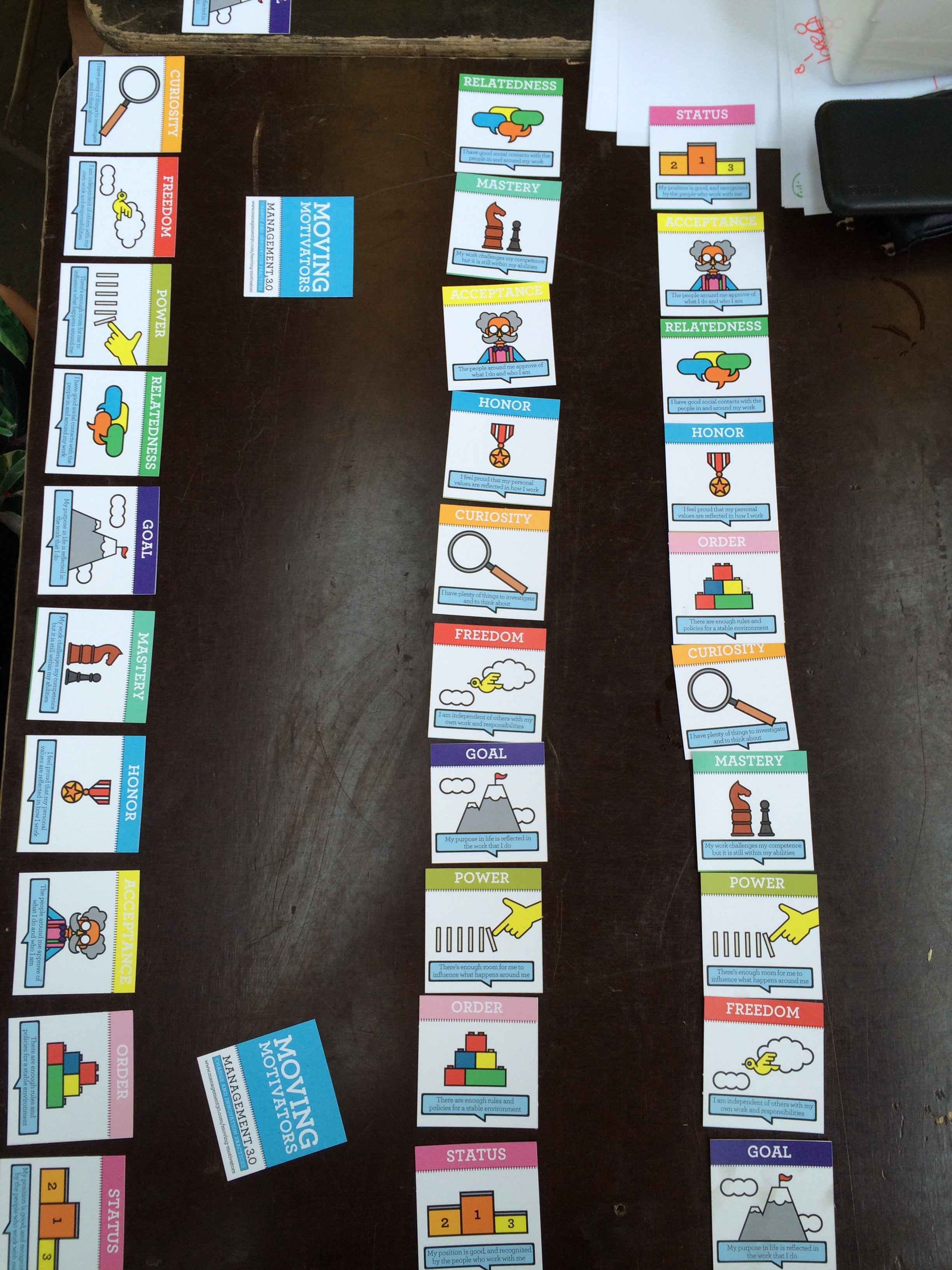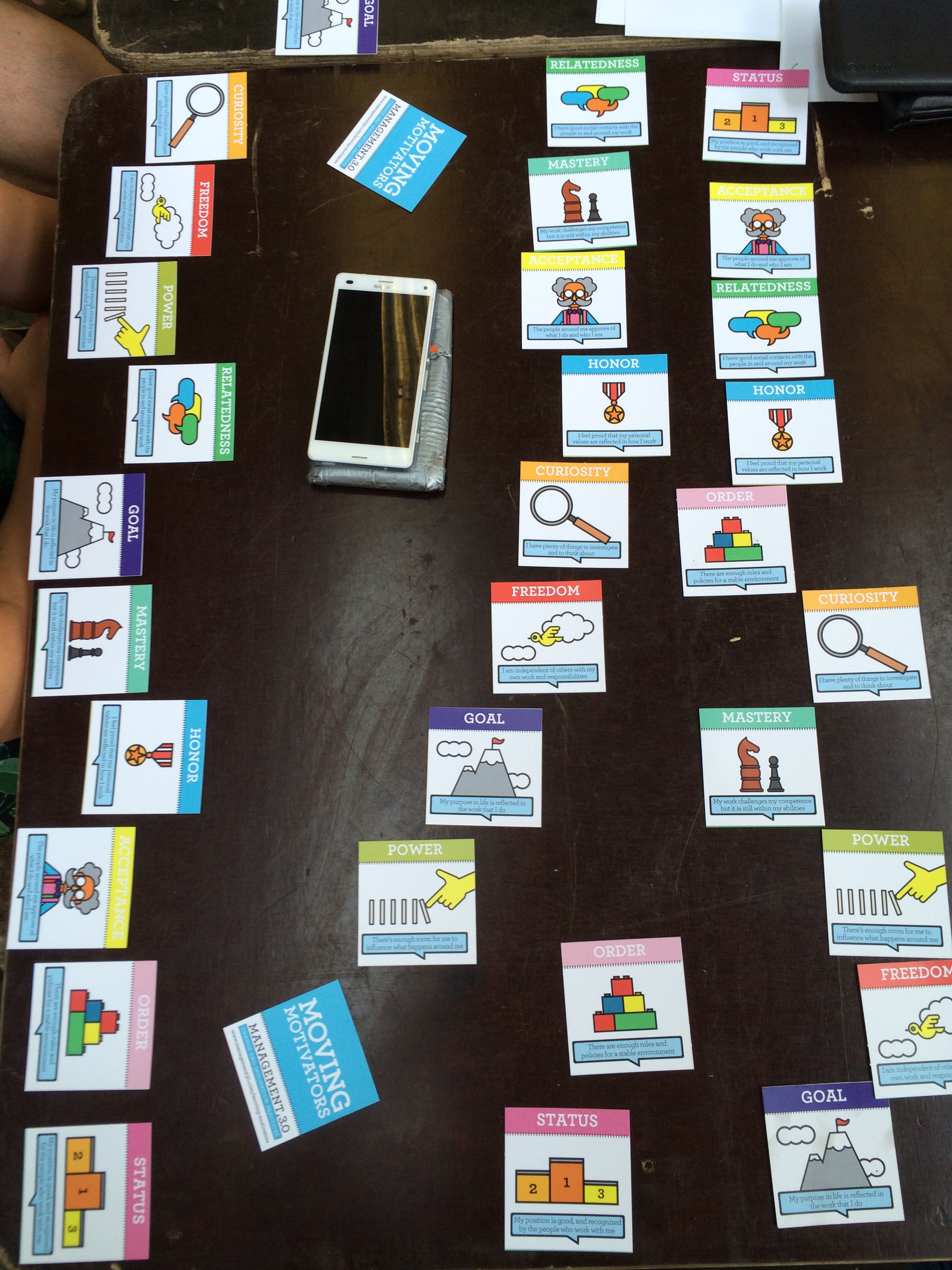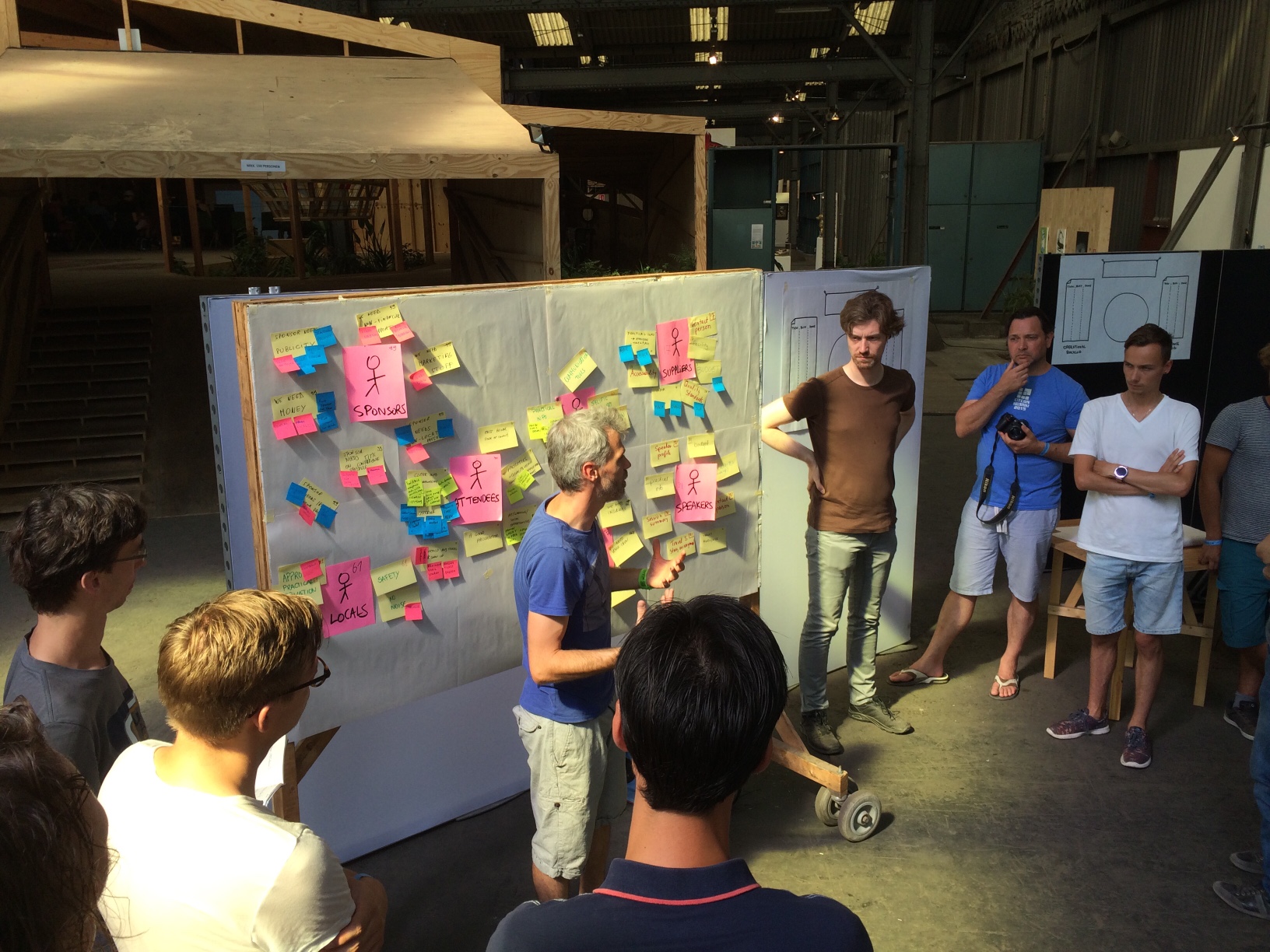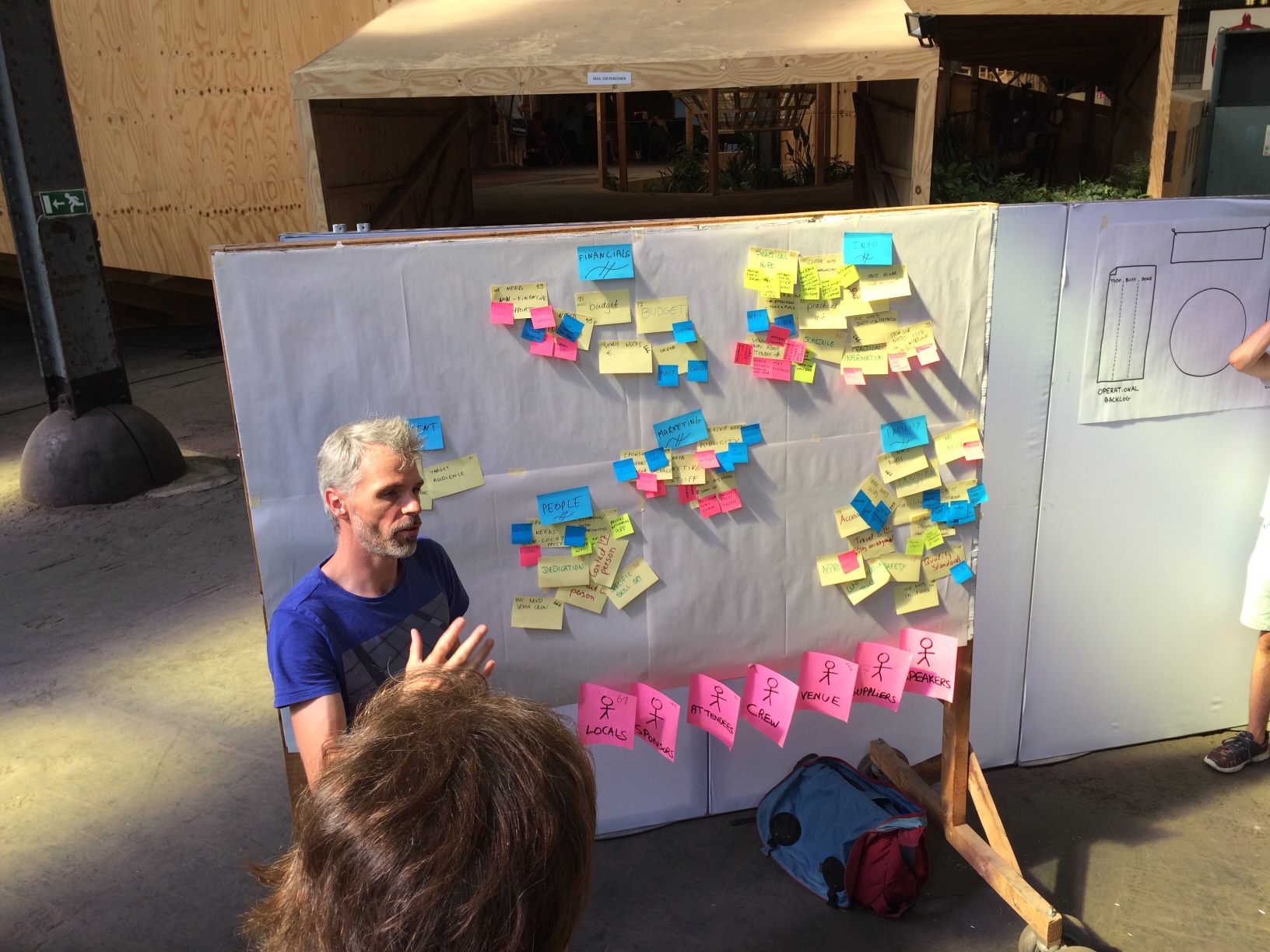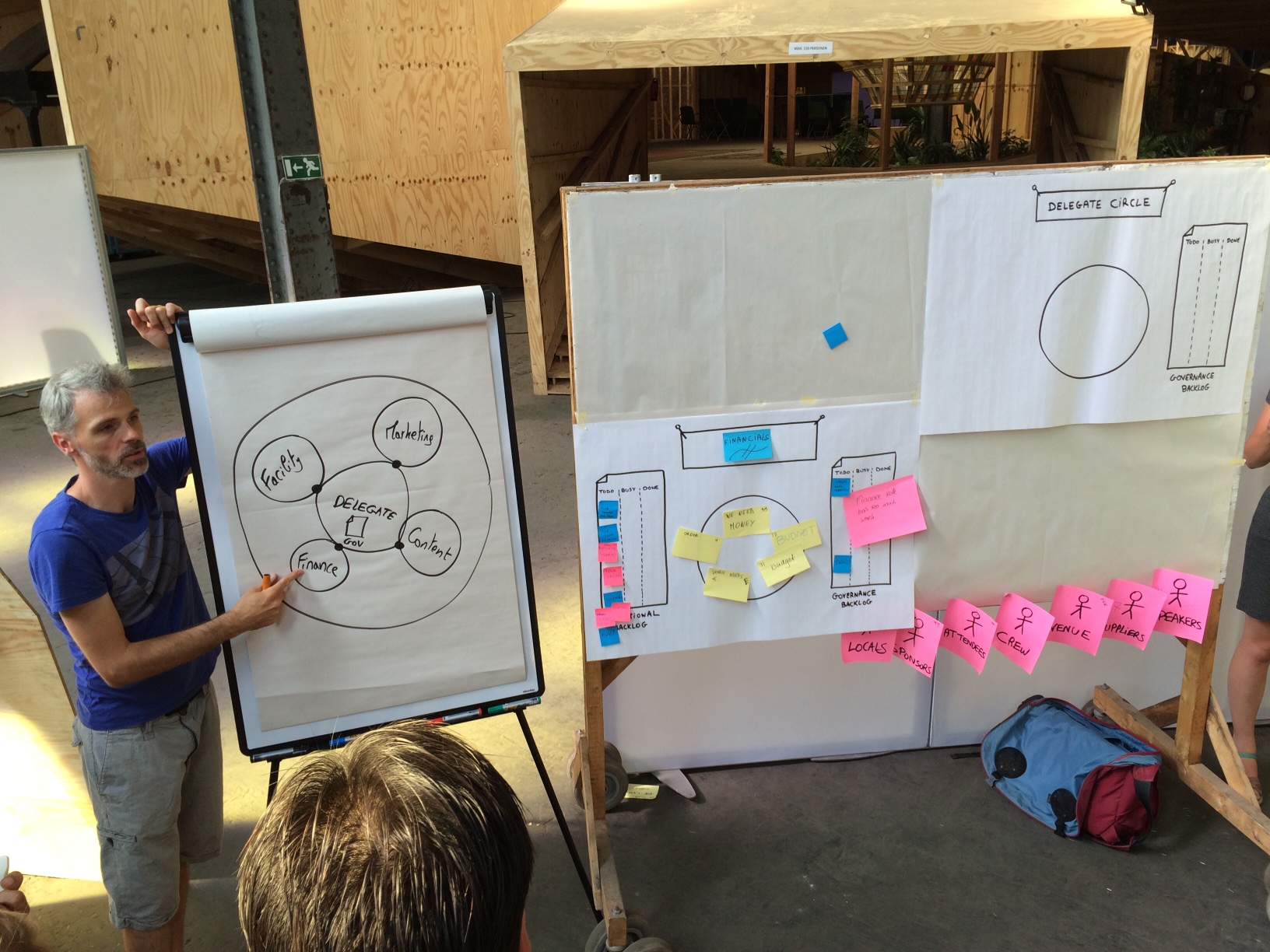 DareFest 2016
DareFest 2016
11 Sep 2016 •
21 min. read • Read the comments
Tagged Experience Report
DareFest 2016
This year I got the opportunity to find out what all the fuss on DareFest was about. I went the full three days, from Wednesday the 24th of August until Friday the 26th, smack dab in the middle of a rare heatwave.
DareFest is a conference (but more of an unconference actually), with speakers, workshops and side activities, on diverse technological topics. To give you an idea, there was a BlockChain workshop, a VR try-out, talks on new organizational culture (sociocracy and management 3.0), BioHacking, and a lot of stuff on design (both in fashion and in future technology).
The way I picked which thing to go to, was purely based on title because there wasn’t a lot of other information.
KnightMoves
First thing I went to was a workshop on How we use gamification in service design. Dave Van De Maele from KnightMoves, showcased their game called Kingdom. We got to see the cards and play around with them on a hypothetical problem of fixing Antwerps mobility if no cars would be allowed inside the city. Read more about it here.
DIY Bio
Then I went to Winnie Poncelet’s talk on DIY Bio, a movement that tries to opensource and democratize bio-engineering. Works well with home-made stuff like 3D printed containers etc.
They have a Code of Ethics.
Out of this movement some interesting initiatives have sprung up, like Epidemium, who have a program called Challenge4Cancer; opensourcing cancer research.
My biggest take-away was that if we leave bio-engineering to scientists only, we’ll dumb down society. Which will lead to delegating even more to scientists, causing a downwards spiral. And DIYBio is trying break the cycle.
Also: mushrooms as a replacement for all the things! (like leather, road-lighting, …).
Get your hands dirty at one of the labs in Ghent - Reagent (nl) or Namur.
Project Leven
Then I saw a talk on biohacking, or Human+, I’m not sure what the difference is.
Peter Joosten (@wpjoosten) talked about his life as a human labrat, all the different things he’s been trying out on himself.
Like various diets he’s tried, how he tried not ejaculating for a month, daily cold showers, … You know, normal, weird stuff.
He also demonstrated how to do a burpee for some reason.
He explained there are so many ways to measure everything about your body nowadays. For example you can send your poop to ubiome. Or find out what your DNA can do for you with 23andme.
After you gathered this data, there are some ways to improve as well. He was very excited that there are going to be human trials with CRISPr. If you haven’t heard of CRISPr yet, I urge you to listen to this RadioLab podcast right now.
He also mentioned Epigenetics, something I still need to look up, but it’s about modifying your environment to change your DNA or something.
Then he concluded by giving his 3 tips to do every day:
- Sleep enough (because you can’t gain back lost hours of sleep, and sleep deprivation is detrimental to your health)
- Get at least 30 minutes of sunshine/outside to recharge your body
- Hang (to stretch your back, and reduce lower back pain from sitting all day or even standing at your standing desk) He also mentioned alternate breathing, a technique where you breathe in through one nosehole and out the other. It helps calm you down in stressful situations.
Visit his website to see if he’s still alive or how he has improved his life.
Guerilla Leadership
In the afternoon I went to a Guerilla Leadership workshop, hosted by Herwig Deconinck and Lisa Boelaert. It wasn’t really a workshop in that we didn’t get to do all that much actually, aside from one super awkward exercise where we had to lose the thing that was holding us back by marching straight for our goal. With someone literally holding you back by the shoulders.
The other thing that annoyed me was that the speakers were trying to sell this method.
In the end they gave us 10 commandments, which do make sense and they had nice examples to go with them.
- Unite around a shared purpose
- Focus on Chances and opportunities
- Make it Small & Make it Happen
- Confront reality & Create transparency
- Make people feel strong
- Make success possible & feed resilience
- Be authentic & trustworthy
- Talk straight
- Build the bridge as you walk on it
- Right your wrongs
We shared what action we were going to take, or had done already, related to one of the commandments.
Here’s what everybody came up with.
After the workshop I asked about how to feed resilience, more specifically how to combat demotivation. And I distilled the excellent feedback in to the following points:
- Define the common goal with your group.
- Prepare for negative criticism and setbacks. So plan them in, make this concrete with your group (of guerillas)
- Pull each other up when this happens. Every one in the group has a responsibility to be aware to this demotivation hitting the group. And you help each other get over it.
- Create awareness loops to help “plan” demotivation hits.
Too bad they put up such a show to share such valuable information.
Pulling in the same direction with autonomous teams
Easily the most interesting talk of wednesday.
Manuel Küblböck works at Stylight, a German company that grew from 4 to 200+ employees, but managed to maintain their 4-man values and way of working (they scaled autonomy).
According to Manuel, there are three practices that they do that make that happen.
They use OKR’s (proper ones), Sprint Planning, and UX Research that feed into each other and most importantly, into the clearly defined company strategy.
The Shared Understanding this creates, along with defining proper OKR’s, create certainty, and certainty leads to happiness.
Another tip he gave us was to NOT use OKR’s as a performance review tool because you’ll set too low of a bar for yourself. Because there’s a reward tied to it. This is true for any target setting.
And yet another tip was to not become too short-sighted. Doing those OKR’s weekly makes it easy to make only quarterly goals, and lose view of the bigger context.
He’s written a magnificent blogpost about it already, so go ahead and read that in stead of my mumblings.
Blockchain
I did go to some company sponsored talks about Blockchain which were mostly commercialisation attempts. But I also went to a workshop that made the bad aftertaste go away.
Bart Waeterschoot (@bytesizebart), the guy that hosted the workshop, recognized me from one of our Software Factory visits. He used to work for SDWorx, and now works for a KMO called bITe. Who apparently are doing stuff with blockchain tech.
His talk/workshop was entertaining, he himself is very knowledgeable, and is able to clearly explain problems and how blockchains work etc.
I learned a lot, and was able to ask all the questions I still had. AND he had a live demo. Very cool workshop!
Here’s the github repo that used Ethereum (or more specifically Truffle) to build a so called Dapp (decentralized app).
Happiness for Teams
In this workshop, excellently hosted by Frederik Vannieuwenhuyse (@vfrederik) and Dieter Dehaes (@dehaesd), we first drew a personal context map of our neighbor by asking questions.
Afterwards someone else at our table had to explain who someone was based on the context map. Pretty cool!
I also learned that not everyone has legible hand writing. :)
Then we did the Moving Motivators game from Jurgen Appelo’s Management 3.0. Which gives a lot of insight into yourself: what motivates me, and how do motivators change in some events.
My motivators are in the middle.
After event x happened. The Goal card is the baseline.
We finished up by giving feedback about the workshop to other people in the workshop using the Feedback Wrap. Which reminded me of course about Dan North’s How to make a Sandwich.
How to develop a creative culture within your organization
Presented by Pieter Daelman from Bedenk.
Alongside the university of Ghent, they have been doing research for 3 years, on how creativity works in companies. Which culminated in to some kind of framework that should help with instilling creativity in all layers of your company.
They call it CReative Organisation MAtrix or CROMA.
It’s basically a checklist in form of a matrix, check his slides to see what the matrix looks like.
This checklist, or rather radiator, gives a company an idea on how they’re doing in every quadrant (there’s 9 in total). 3 levels: Individual, Team and Company. 3 phases: Orientation, Idea creation and Promotion.
He gave some real life examples for every quadrant, so we could get an idea on how other companies or people improved that quadrant for them.
For example, aside from Colruyts Red Phone, where any customer can call them and tell them they saw a cheaper price at a competitors. They also have a Green phone, only for employees, that use it to share their improvement ideas with someone directly connected on the other side of the line.
It’ll get registered, and afterwards they get personal feedback on why it got approved, and if they’d want to join the implementation team, or why it didn’t get approved with a proper explanation etc.
That was an example of the Company + Promotion quadrant, where Decision making & constructive feedback live.
CROMA is based on scientific research, and basically works like any other organisation framework, like CMMI e.g.
Bedenk helps you create a matrix radiator, and facilitates actions etc., and they’re also releasing a book about it, coming this december. And we got the premiere about this new framework at DareFest.
My initial thoughts are that it seems like it’s overkill and might be a bit avant-garde at the moment, but that it might work very well to sell to higher management, while the working class reaps the benefits because most examples are about employee empowerment.
Education in the Exponential Age
Deepak Mehta (@deeeep) made me chuckle with his rant on Plastische Opvoeding (Arts & Crafts) in belgian schools: teaching kids important, artistic skills in 1 hour a week, which is perceived as relax-time without guidance, by the teacher that is the least motivated in the entire school.
With Exponential Age he is referring to the theory behind The Singularity (computer power is growing exponentially and will eventually outperform human brainpower).
Some issues he predicts:
- Should you learn x when there is google.
- Deepak thinks general practitioners job will be unnecessary in 5 years.
- No single job for life.
- Expect at least 2-3 job obsoleteness events
- AI and Robots will do everything better
- New tech will come and go faster and faster.
As a solution (in the field of education), he thinks that we should teach kids how to Learn - Unlearn - Relearn (Toffler). Read this.
21st century skills are the 4 C’s, Context, Container, Component and Class diagrams. No wait… Those are other 4 C’s. ;)
Deepak means Communications, Collaboration, Critical Thinking and Creativity.
We should also teach our kids Design Thinking.
And have them do peer-to-peer learning. Because learning from another kid increases relatedness, and teaching provides new and better insights.
The role of an actual teacher would then move more towards a coach and mentor instead of a know-it-all type of person.
He also said that schools are not going to be teaching this to your kids, so you should find alternatives. Such as TEDxYouth Flanders, or CoderDojo.
BioComputer
There was an interesting talk by Joao Gil, who made an art installation called BioComputer, that serves as a sort of assessment of future speculative technology.
It fit into the Speculative Everything… thing…
I do think it’s an easily underestimated step towards early feedback of novel ideas.
Things that Startups and VC investment have to deal with every day.
I also think it has the additional purpose of informing and slowly introducing new, groundbreaking, moral-changing technology to the general public.
Creating your future history: D-Day lessons for every day
Erin Meyer has been living in Belgium for half of her life now.
She set out to fulfill her dream of writing a book (instead of getting a Phd).
Through 3 questions out of her book D-Day lessons for every day, and accompanying exercises, she taught us about ourselves.
1. What is your current version of “impossible”.
Current, because after a while you’ll have reached what seemed impossible before. Let’s see how we get from Impossible to I’m possible.
Exercise: list what seems impossible for you at the moment.
2. What do you stand for?
Exercise: write down words that you think summarize your values, your idols, music, movies or series you love, concepts, experiences…
Then circle three of those that you will revisit in the next 3 weeks.
3. What makes you feel alive?
Honor the lives of the deceased by living your life
You contribute to the lives of others by doing what brings you to life
Exercise: Imagine that it’s now today + 3 years and you encounter the same people.
What will you tell them about what happened to you in the past 3 years. What did you achieve? What did you experience?
To me this workshop served as a mirror.
I reflected on the fact that I’m (still) not really doing anything with my life. Even in the last exercise I wrote I still won’t know what to do with my life, but I’ll have progressed in a natural way.
So it was an interesting self-reflection exercise.
Driver mapping - Sociocracy 3.0
Jef Cumps (@jcumps) from iLean, excellently facilitated a fun and insightful workshop on Driver Mapping.
Driver Mapping, I think, is a practice out of the Sociocracy 3.0 framework. It’s like Impact Mapping, but for organisational structure.
First we set out, with everybody in the room, to host a conference, and tried to figure out in groups what actors, or personas, are essential to a conference. And started to write down what their needs (sub-drivers) are.
Then we changed perspective by taking away the actors and trying to categorize all of the drivers.
And we created so called circles, groups with people that are motivated enough to deal with a driver/category.
Overlapping tasks can be dealt with using the delegation circle pattern from Sociocracy 3.0.
Future of good and evil
I also went to The Future of Good and Evil by Dr. Stephen Cave.
He talked about what we can do when (not if) our values and morals change in the future.
To be able to answer that question, he gave us a thinking exercise: What can we be condemned for by our grandchildren?
He also questioned whether or not we can use data and machine learning (the tools of today), to answer the question of What will our future standards look like?.
As examples of current data and machine learning:
- US Judges use AI to help decide on release on parole of offenders.
- Surgeons trying to decide whether or not to cut off someones leg also gets fed info from AI.
There’s a pitfall in believing in AI provided solutions though. He retold Plato’s story of Socrates and Euthyphro where a son wanted to prosecute his father (who killed someone), because the Gods’ word is good.
Just like in that story, where the Gods provide morals, we can have our morals provided by AI, but it doesn’t mean that we should blindly pursue the AI’s suggestions.
Other practical stuff we can already start doing so as to not be condemned by our grandchildren:
- Rights for future people. Decisions effect future people, so why don’t they have rights?
- Animal rights. Comparable to cannibalism: eating equivalent things (things that are worth the same).
- Opening up all borders. Comparable to sexism and racism. Don’t lock people up. Help them make better choices instead.
Every day there is more and more proof of intelligence in animals, yet we still keep eating, and basically torturing them in industrialized meat providing companies.
As a conclusion he turned his intro thinking exercise into a positive one: What might we be admired for?
As a user, I hate User Stories
Matteo Cavucci (@MatteoMced, Thoughtworks Berlin) had an interesting presentation too.
It was yet another reminder that user stories should be conversation starters, not requirements documents.
Do your Stories contain Acceptance Criteria, are created off of a Template (As a …, when I …, I want to …, so that …), or use User in their title?
Then it’s likely your stories are indeed requirement documents, and they are effectively hiding one of the most important values in Agile: Individuals and Interactions over processes and tools.
You could also easily make the case that Customer collaboration over contract negotiation is hidden as well.
He gave us some ideas on how to fix/improve:
Stop writing, start discussing.
Create shared understanding, instead of lists of requirements.
Don’t be a Template Zombie, tell a story.
If you’re unsure, you can use a placeholder in the text.
Avoid features, write down the user side of things.
Basically, don’t write down the solution space, write down the problem space. I think this comes down to writing down the Why? instead of the What?.
Use actual people instead of the mythical user. Because they can provide context, limit scope creep, keep focus and serve motivations and impediments.
Then he also shared a more novel idea: Stories are not only small because these are easier to predict, but also because they’re actually small experiments (with hypotheses).
Your hypothesis must be small, right or wrong, and it should serve the purpose of learning, instead of amount of delivery.
To me this is a refreshing perspective at user stories.
A good way to move away from using Acceptance Criteria in your stories, is to come together (e.g. during kick-off or dev review) and to discuss what the BDD statements should be, together.
Virtual Reality - HTC Vive
I closed off the day, and DareFest, by trying out Steams HTC Vive.
Tanguy de Keyzer (@belgiumvr), your VR go-to guy in Belgium, loaded The Brookhaven Expirement, a zombie-shooter game. And I got to shoot at zombies. And whack them with my combat knife. And die a horrible death. Woot!
When you first put on the goggles (these did something!), you can easily notice the outline. Like if you use your hands as goggles, you can still see the outline of your hands, it’s just like that.
But after a while you stop noticing, because you’re continuously immersed in the 3D environment.
I think I spent about 8 minutes in the dark, gloomy, zombie infested (virtual) world. And I’m happy to say I didn’t shit my pants, or scream… too loud. :)
When the facilitator took off the goggles, my brain was struggling a little bit with reality.
It was weird knowing that a few seconds ago, there used to be a burning appartment behind me, and a busted car to the left, some oil cans and a camp fire on the ground etc. And now they’re suddenly gone.
It’s like, your brain accepts all these new orientation details, and now it has to override those orientation details with the current ones.
However, at the price of 900€, the fact that I’d still need to upgrade my desktop, and not the fact that there’s not that much content out yet, I’m going to wait for the next versions of VR hardware.
But it was a very fun experience! So thanks Tanguy!
Conclusion
On Thursday, in between presentations, I sat down across someone who happened to be Matteo Cavucci from ThoughtWorks (Berlin), before I knew who he was. And I got a chance to talk with him about the epic struggle with Legacy Software and applying DDD.
It’s stuff like this that make Darefest worthwhile for me. The interaction with (likeminded) new people has been great.
Most of the presentations themselves were too heavily sales oriented though.
It was all too clear that most speakers were there not to share their knowledge, but rather to sell their services or product. And that’s pretty sad.
As a conclusion, the first day I was disappointed, the second day less disappointed, and the third day I felt I learned a lot.
I had the feeling that a lot of the talks there valued promotion over knowledge sharing, and I really disliked that. I think it really deteriorates your learning experience.
DareFest organisation itself had a lot of issues too.
Because of the smoldering heat and lack of facilities (no airconditioning, not even ventilation), it was too hot to bear, most of the time.
Add to that a bunch of catering issues, complete lack of route signage, no sound isolation, no updated schedule information. e.g. I waited 10 minutes for a presentation that was cancelled; the drone racing was also cancelled (I think), and lack of information of the talks (I only had the title to know whether it would interest me or not).
I think it could’ve been done so much better. I also don’t understand how all these issues could happen, since this isn’t the first time that they organized this conference.
Everyone I talked to said that last years event was way better. They attributed the issues related to presentation content, to the topic diversity being too broad. I don’t know about that, I liked learning about shrooms, and then learning what other organizational structures are out there.
After re-reading all my notes and in writing this blog post, I did learn some valuable things in those 3 days. In the end I would’ve ideally just visited on the last day.
I think I made the mistake (?) of comparing DareFest to The Lead Developer conference. And they’re simply on a completely different level.
So… #WorthIt? I’m still unsure, but I am glad I once again had the opportunity to go to this conference.
